Soltanus Acoustics ESL Virtuoso Loudspeaker
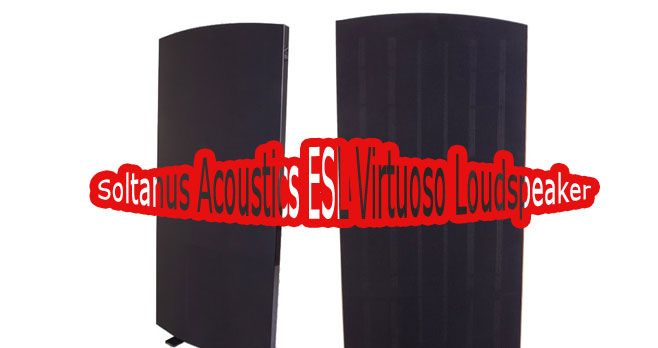
 For the past few years, I’ve been using the venerable Magnepan MG20 loudspeakers as my reference. I bought them used from Terry London, a great writer for Home Theater Review. He had done away with the original MG20 crossovers and replaced them with the very fine Bryston 10B electronic crossover. I eventually replaced the Bryston with the even finer Pass Labs XVR-1. This combination has produced the best top-to-bottom performance of any speakers I’ve owned. But the fact remains that these speakers are a 20-plus year old design and sooner or later something will come along and replace them.
For the past few years, I’ve been using the venerable Magnepan MG20 loudspeakers as my reference. I bought them used from Terry London, a great writer for Home Theater Review. He had done away with the original MG20 crossovers and replaced them with the very fine Bryston 10B electronic crossover. I eventually replaced the Bryston with the even finer Pass Labs XVR-1. This combination has produced the best top-to-bottom performance of any speakers I’ve owned. But the fact remains that these speakers are a 20-plus year old design and sooner or later something will come along and replace them.
Enter Jay Bertrand of Bertrand Audio Imports, the US Distributor for Soltanus Acoustics, a Serbian electrostatic loudspeaker company. Jay offered me the opportunity to review the company’s highly-praised ESL Virtuoso loudspeakers. Suddenly, I feared that the days of the Maggies being the anchor of my reference system may finally be numbered. Out with the old. In with the new… maybe. Read on.
The ESL Virtuoso
Soltanus Acoustics is located in Subotica, Serbia, a place well known for its gorgeous architecture. The company’s chief designer is Zoltan Mikovity. He founded the company in 2012 but has been building electrostatic speakers for more than two decades. The ESL Virtuosos are unique in that they are a crossover-less design, which when done right, can possess an amazing level of realism, especially from the midrange on up. They use a single electrostatic driver that is capable of reproducing the entire frequency range, eschewing the need for a crossover. Their frequency response is rated at 40Hz to 20kHz. This is that important range of sound where most musical information resides.
The company’s website gives a very good explanation of how their loudspeaker works: “Electrostatic speakers have three basic parts: the stators on the front and back (the black screens), a super-thin, visually transparent electrostatic diaphragm, and spacing spars that suspend the diaphragm in the middle. Your amplifier’s signal is applied to the stators to create an electrostatic field that moves the diaphragm and excites the air, creating the legendary ESL sound.” That was even simple enough for me to understand.
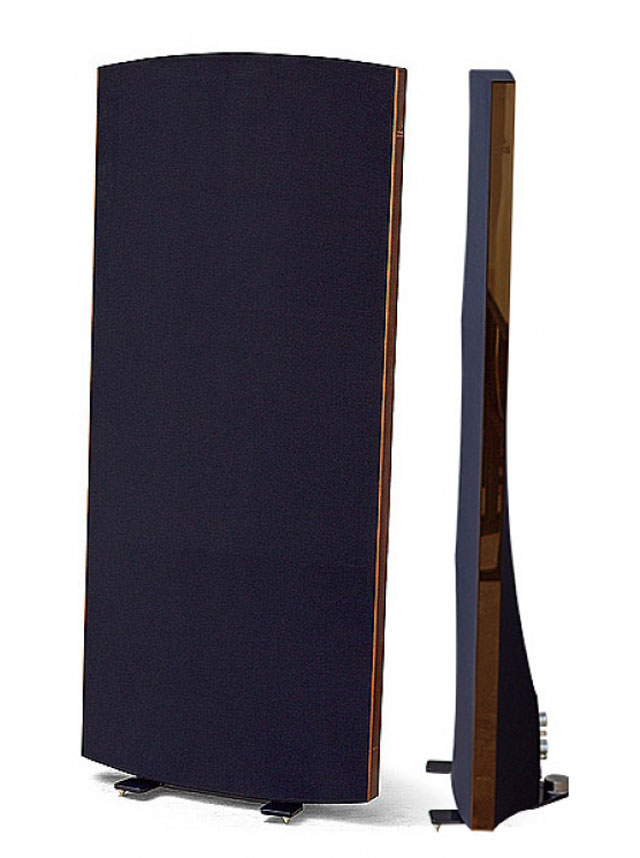
The ESL Virtuoso is an elegantly styled speaker of nearly perfect proportions. They measure about 27” wide x 60” high and 3” deep and weigh about 57 pounds each. It is neither too big nor too small to deliver full-range performance without dominating your room the way my Maggies can. The panels are covered in an attractive black cloth with Walnut trim on the sides. At the bottom of the rear of the speakers are the speaker cable terminals and AC cord receptacle. There’s also a power switch and control knobs for tweeter bias selection and amplifier damping factor. These are particularly thoughtful design touches as is having separate positive speaker terminals based on amplifier damping. Finally, there is fuse protection and an even extra set of fuses are provided as well.
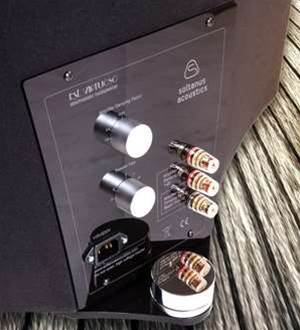
The Virtuosos arrived in a pair of sturdy wooden crates. Each speaker comes with its own slip cover and is expertly packed in Styrofoam. Attractive heavy metal bases come with the speakers and are also packed in the crates along with boxes for the accessories and owner’s manual. Because of their size and weight, it is recommended that two people do the packing and unpacking of these speakers. But taking my time, I managed to do it alone just fine. Once I removed the speakers from their crates, I carefully laid them down and attached the bases with the supplied screws and an Allen wrench.
With the bases attached, I simply connected my speaker cables and power cords and was able to start listening to music. But at this point, the setup process was just beginning. From reading the wonderfully written owner’s manual I learned that these speakers were designed to be highly directional. This is common for many panel speakers; think Quad, Martin Logan and of course, Magnepan. Special care must be given to placement and toe-in. Once I felt that I had the speakers in the best possible place I attached the attractive chrome-plated spikes to the front of the base and a large chrome-plated “knob” on the back of the base. This knob is what is used to adjust the dispersion angle that the panels sit at.
System and Set Up
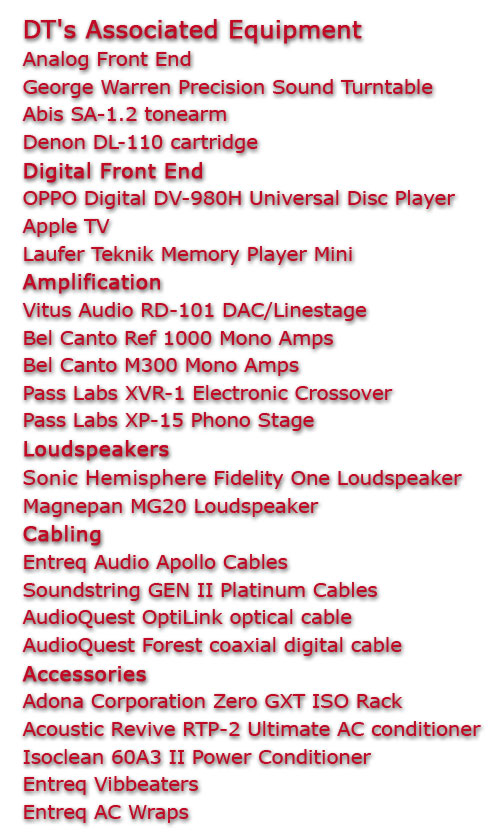 Those of you who have read my reviews over the past few years know that I am not one for multiple system changes. When I find something that I like, I tend to stick with it. My reference system has been a fixture from the moment that I connected to XVR-1 to the Maggies, via two pairs of Bel Canto mono amps (M300s for the tweeter/midrange. REF1000Ms for the bass). Where there has been some change, has been in my source components. My main source is still my George Warren turntable, but now it is adorned with an Abis SA-1.2 tonearm and the super-slick and affordable Denon DL-110 moving coil cartridge. My analog rig feeds a Pass Labs XP-15 phonostage. My digital source is my newest addition; the Laufer Teknik Memory Player Mini. I won’t go into details about my feelings on this device at this time, but be on the lookout for a future review where I will have a lot to say about this device and the true meaning of “high-end audio.” The Mini feeds a Vitus Audio RD-101 DAC/linestage and my trusty OPPO DV980H CD player and Soundstring Gen II Platinum cables round out my system. My listening room is about 26’ wide and 20’ deep with 8” tall ceilings and carpeted concrete floors.
Those of you who have read my reviews over the past few years know that I am not one for multiple system changes. When I find something that I like, I tend to stick with it. My reference system has been a fixture from the moment that I connected to XVR-1 to the Maggies, via two pairs of Bel Canto mono amps (M300s for the tweeter/midrange. REF1000Ms for the bass). Where there has been some change, has been in my source components. My main source is still my George Warren turntable, but now it is adorned with an Abis SA-1.2 tonearm and the super-slick and affordable Denon DL-110 moving coil cartridge. My analog rig feeds a Pass Labs XP-15 phonostage. My digital source is my newest addition; the Laufer Teknik Memory Player Mini. I won’t go into details about my feelings on this device at this time, but be on the lookout for a future review where I will have a lot to say about this device and the true meaning of “high-end audio.” The Mini feeds a Vitus Audio RD-101 DAC/linestage and my trusty OPPO DV980H CD player and Soundstring Gen II Platinum cables round out my system. My listening room is about 26’ wide and 20’ deep with 8” tall ceilings and carpeted concrete floors.
As I began listening, I quickly came to realize that figuring out the optimum placement of the Virtuosos would be no small feat. My initial impression that these speakers, while musical, were significantly bass shy compared to what I was accustomed to hearing from my Maggies. Obviously, my initial attempt at setting the speakers up was a little off.
Fortunately, Ron Lapporte, the owner of Deerfield, Illinois-based Blue Smoke Entertainment Systems came to my home to hear the Virtuosos. He and a friend helped to get the speakers dialed-in pretty well by tweeking the position and dispersion angle of the panels. In the end the speakers were placed 13’ apart and 4’ from the rear wall. My listening position was 13’ back from the speakers. Now when I say that the speakers were “dialed in,” as I learned through my time with the Virtuosos, this is a speaker that has such a well-defined “sweet spot” that it presents you with a much different listening experience than you get outside of that sweet spot. Outside of the sweet spot, I still found myself tapping my feet and enjoying the speakers’ musicality. But when, Ron and his friend departed and I was able to make some final minor adjustments, especially in my listening position, the “ooohs” and “aahs” began.
Serious Listening Begins
The first song I listened to was one I played for Ron, Patrice Rushen’s “Settle For My Love” from the CD Pizzazz [Elektra]. From the moment this song began playing, two thoughts crossed my mind. The first thought was that speakers like the Virtuosos are why I love ESLs. I love holographic vocals and being able to get a sense of the nature of the musician’s instruments. I love when you can hear the sound of fingers sliding down nylon strings and the attack of percussions and crash of high-hat cymbals. I love the way a well recorded song can transport you to the place where the music and singers are being recorded. The second thought I had was… I need some vinyl.
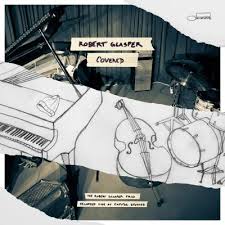 I didn’t have to dig too deep to find the first piece of vinyl that I wanted to listen to through the Virtuosos; the Robert Glasper Trio’s Live at Capitol Studios [Blue Note]. The cool thing about listening to music from someone you’ve seen perform in person is that it is easy to imagine how the musicians were most likely positioned when the music was recorded. This was never more obvious than when I listened to the song, “So Beautiful,” played through the Virtuosos. What a glorious soundstage these things create. The musicians and their instruments are rendered so well that I felt like there should have been a small table in front of me with a shot of Jack Daniels on it. These speakers offer incredible amounts of detail from such delicate drive units. These diaphragms are deceptively quick and portray the upper frequencies honestly and without edge. Moving the speakers in a couple inches from each side gave the stage even tighter focus and this is where I left the speakers for the remainder of my listening sessions… seriously.
I didn’t have to dig too deep to find the first piece of vinyl that I wanted to listen to through the Virtuosos; the Robert Glasper Trio’s Live at Capitol Studios [Blue Note]. The cool thing about listening to music from someone you’ve seen perform in person is that it is easy to imagine how the musicians were most likely positioned when the music was recorded. This was never more obvious than when I listened to the song, “So Beautiful,” played through the Virtuosos. What a glorious soundstage these things create. The musicians and their instruments are rendered so well that I felt like there should have been a small table in front of me with a shot of Jack Daniels on it. These speakers offer incredible amounts of detail from such delicate drive units. These diaphragms are deceptively quick and portray the upper frequencies honestly and without edge. Moving the speakers in a couple inches from each side gave the stage even tighter focus and this is where I left the speakers for the remainder of my listening sessions… seriously.
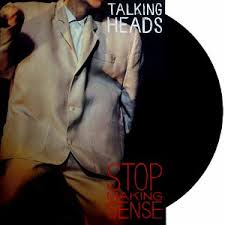 Reproducing the proper scale of the venue on a live recording is very important to me. One recording that really tests a speaker’s ability to do that is the Talking Heads’ Stop Making Sense [Sire Records]. Talk about a great concert venue. This concert was recorded live from the Pantages Theater in Hollywood, California. I once saw Prince perform there and the acoustics were jaw-dropping. The Virtuosos made listening to this album an experience, which is exactly what going to a live concert is supposed to be. There is a lot of interplay between David Byrne and his bandmates and the size of the soundstage that these speakers project, makes you feel drawn into and among the performers. Particularly on familiar songs like the opening track, “Psycho Killer,” which Byrne performs solo with just an acoustic guitar. This album is loaded with other great tracks but my favorite has to be track four, “Burning Down the House.” Being a longtime Parliament/Funkadelic fan, I loved the extensive solo by the late great P-Funk wizard, Bernie Worrell. I’m not sure if anyone had more fun with a synthesizer solo than this man. He fills the soundstage with layer upon layer of whirling electronica. RIP Mr. Worrell. These speakers do an awesome job of placing Byrne and his bandmates in realistic space, with realistic height and depth. The tonal balance is linear and richly rendered.
Reproducing the proper scale of the venue on a live recording is very important to me. One recording that really tests a speaker’s ability to do that is the Talking Heads’ Stop Making Sense [Sire Records]. Talk about a great concert venue. This concert was recorded live from the Pantages Theater in Hollywood, California. I once saw Prince perform there and the acoustics were jaw-dropping. The Virtuosos made listening to this album an experience, which is exactly what going to a live concert is supposed to be. There is a lot of interplay between David Byrne and his bandmates and the size of the soundstage that these speakers project, makes you feel drawn into and among the performers. Particularly on familiar songs like the opening track, “Psycho Killer,” which Byrne performs solo with just an acoustic guitar. This album is loaded with other great tracks but my favorite has to be track four, “Burning Down the House.” Being a longtime Parliament/Funkadelic fan, I loved the extensive solo by the late great P-Funk wizard, Bernie Worrell. I’m not sure if anyone had more fun with a synthesizer solo than this man. He fills the soundstage with layer upon layer of whirling electronica. RIP Mr. Worrell. These speakers do an awesome job of placing Byrne and his bandmates in realistic space, with realistic height and depth. The tonal balance is linear and richly rendered.
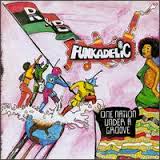 But let me get down to brass tax. The magic in the midrange is something you come to expect from stats. But, when I saw that these speakers, despite their relatively modest stature (compared to my Maggies, that is), are described by the company as being “full range,” there was only one question that I had: Can they Rock? Certain types of music, particularly rock, where there tends to be an abundance of cymbal crashes and screeching guitar riffs, can be a bit much for some speakers. Often they lose their composure and start to sound bright and edgy. So when I dug out (sticking with the George Clinton theme) Funkadelic’s classic, One Nation Under A Groove [Warner Bros] I knew exactly which song I wanted to hear through these speakers; “Maggot Brain.” This version of the song, made legendary by the late Eddie Hazel, is performed live by Mike “Kid Funkadelic” Hampton. Some of you guitar aficionados may take umbrage with this, but I think the Hampton version is better. This is a song that, when rendered well, stirs the emotions like no other. The song actually has two personalities. It begins as a melancholy lamentation and then turns into a song of redemption. Legend has it that George Clinton told his guitarist to play the first half of this nearly eight minute solo as if he had just heard that his mother had died and the second half as though he could bring her back with his guitar. It would take a special speaker to render that kind of emotion in a performance, but that’s exactly what the Virtuoso is, special.
But let me get down to brass tax. The magic in the midrange is something you come to expect from stats. But, when I saw that these speakers, despite their relatively modest stature (compared to my Maggies, that is), are described by the company as being “full range,” there was only one question that I had: Can they Rock? Certain types of music, particularly rock, where there tends to be an abundance of cymbal crashes and screeching guitar riffs, can be a bit much for some speakers. Often they lose their composure and start to sound bright and edgy. So when I dug out (sticking with the George Clinton theme) Funkadelic’s classic, One Nation Under A Groove [Warner Bros] I knew exactly which song I wanted to hear through these speakers; “Maggot Brain.” This version of the song, made legendary by the late Eddie Hazel, is performed live by Mike “Kid Funkadelic” Hampton. Some of you guitar aficionados may take umbrage with this, but I think the Hampton version is better. This is a song that, when rendered well, stirs the emotions like no other. The song actually has two personalities. It begins as a melancholy lamentation and then turns into a song of redemption. Legend has it that George Clinton told his guitarist to play the first half of this nearly eight minute solo as if he had just heard that his mother had died and the second half as though he could bring her back with his guitar. It would take a special speaker to render that kind of emotion in a performance, but that’s exactly what the Virtuoso is, special.
 The final recording of note from my listening sessions was from another side of the music spectrum, Eva Cassidy’s Live At Blues Alley [Blix Street]. Mikovity understands that the true art and emotion of music comes from the midrange and unlike so many other designs, they don’t sacrifice any of it for the sake of carving out those bright sounding, uppermost high frequencies or deep, barely audible bass. Instead, the Virtuosos produce a sound that nicely articulates the three-dimensionality of vocalists and the air and life of acoustic music in live recordings while still presenting bass that is deep and tuneful. This recording captures a peerless performer in her finest form, and these speakers make sure that you share in that experience, with every word she sings and every chord she plays. Her rendition of the Simon & Garfunkel classic, Bridge Over Troubled Water, is one of the most soulful I’ve heard and I defy you to attend an audio show anywhere in the world and not hear her rockin blues classic, “Stormy Monday,” at least a half dozen times.
The final recording of note from my listening sessions was from another side of the music spectrum, Eva Cassidy’s Live At Blues Alley [Blix Street]. Mikovity understands that the true art and emotion of music comes from the midrange and unlike so many other designs, they don’t sacrifice any of it for the sake of carving out those bright sounding, uppermost high frequencies or deep, barely audible bass. Instead, the Virtuosos produce a sound that nicely articulates the three-dimensionality of vocalists and the air and life of acoustic music in live recordings while still presenting bass that is deep and tuneful. This recording captures a peerless performer in her finest form, and these speakers make sure that you share in that experience, with every word she sings and every chord she plays. Her rendition of the Simon & Garfunkel classic, Bridge Over Troubled Water, is one of the most soulful I’ve heard and I defy you to attend an audio show anywhere in the world and not hear her rockin blues classic, “Stormy Monday,” at least a half dozen times.
Conclusion
In an odd sort of way, I have to thank our new President for saving me from myself. You see I work for a non-profit organization who gets part of its funding from a federal agency that President Trump wants to eliminate. So the possibility of me treating myself to a pair of these lovely speakers got eliminated too. But sticking with my Maggies is not a bad consolation prize. The Soltanus Acoustics ESL Virtuosos simply did some things to live music that the Maggies couldn’t quite match, as long as I was listening from the sweet spot, that is. These days, the ability to have access to an entire library of music without leaving your sweet spot makes this a non-issue. While my Maggies can play slightly louder and deeper, the way the Virtuosos render music from the lower midrange up more than makes up for it. As for now, the Maggies will remain as my reference speaker. It’s only been a week since I had to send them back, but I miss them already. More to the point; I miss that sweet spot. Enthusiastically recommended!


dave thomas
Specifications
· Frequency Response: 40-20.000 Hz ± 3dB
· Horizontal Dispersion: 35 degrees
· Vertical Dispersion: 150 cm line source
· High Frequency Transducer: 120×14 cm elecrostatic transducer (200-20.000 Hz)
· Low Frequency Transducer: 2 speakers 140×16 cm dipole electrostatic transducer
· Sensitivity: 83 dB/2.83 volts/2 meter
· Impedance: 4 ohms, 1,5 at 20 kHz
· Recommended amplifier power: 25-300 Watts per channel
· Recommended amplifier damping factor: 25 or higher
· Crossover components: No crossover components
· Inputs: Custom binding posts
· Weight: 26kg
· Dimensions: 153 cm × 68 cm × 5/33 cm
· Price: $12,500.00/pair
Specifications are subject to change without notice.
Contact:
Soltanus Acoustics
Matije Gupca 14,
24000 Subotica
Serbia
Tel: +381 64 825-1464
Fax: +381 24 55-44-98
US Distributor
Bertrand Audio Imports
Tel: +1 603 883 1982
Stereo Times Masthead
Publisher/Founder
Clement Perry
Editor
Dave Thomas
Senior Editors
Frank Alles, Mike Girardi, Russell Lichter, Terry London, Moreno Mitchell, Paul Szabady, Bill Wells, Mike Wright, and Stephen Yan,
Current Contributors
David Abramson, Tim Barrall, Dave Allison, Ron Cook, Lewis Dardick, John Hoffman, Dan Secula, Don Shaulis, Greg Simmons, Eric Teh, Greg Voth, Richard Willie, Ed Van Winkle, Rob Dockery, Richard Doran, and Daveed Turek
Site Management Clement Perry
Ad Designer: Martin Perry






Be the first to comment on: Soltanus Acoustics ESL Virtuoso Loudspeaker